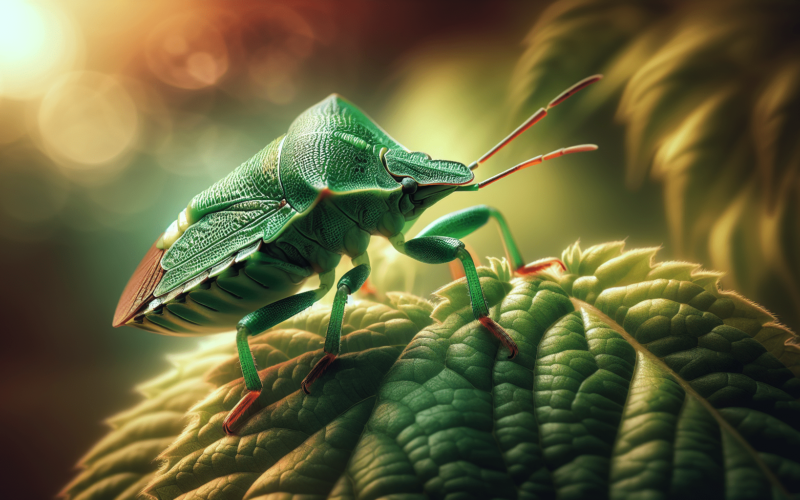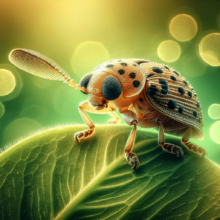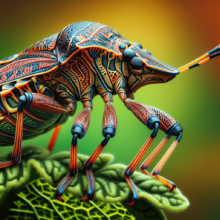Discover what classifies a bug in nature and technology. Explore the definitions, characteristics, and significance of bugs in our world.
What Type Of Insect Is Considered A True Bug?

Have you ever wondered what distinguishes a true bug from other insects? It can be quite fascinating to explore the intricate world of these fascinating creatures. Understanding their classification can bring clarity to this often-confusing aspect of entomology.
What Are True Bugs?
True bugs are a specific group within the class Insecta, more formally known as Hemiptera. This group is characterized by their unique mouthparts that allow them to pierce and suck fluids from plants or other animals. Notably, true bugs undergo a gradual metamorphosis, which means they develop through a series of progressively more complex stages rather than a complete transformation.
True bugs are ubiquitous in different ecosystems, contributing significantly to ecological balance. So, what makes them tick? Let’s break it down.
Characteristics of True Bugs
True bugs possess several defining features that set them apart from other insect groups. Knowing these characteristics can help you identify them easily in your backyard or while hiking.
-
Mouthparts: One of the most distinct features is their specialized mouthparts, known as stylets, which they use for feeding. These needle-like appendages enable them to pierce plant tissues or animal skin to extract sap or blood.
-
Wings: True bugs typically have two pairs of wings. The front pair, called hemelytra, is thickened at the base and membranous at the tips. This structure provides both protection and functionality for these insects.
-
Body Structure: They often have a triangular shape when viewed from above, especially those in the suborder Heteroptera. Their bodies can range in size, color, and texture, but many exhibit a similar overall appearance.
-
Gradual Metamorphosis: Unlike insects that undergo complete metamorphosis (like butterflies and beetles), true bugs experience incomplete metamorphosis. This means they hatch from eggs into nymphs, which gradually develop into adults through molting.
Examples of True Bugs
Identifying true bugs can be easier if you recognize some common examples. Here’s a breakdown of various true bugs:
| Type | Description | Common Examples |
|---|---|---|
| Green Leaf Bug | Often found on trees and shrubs, these bugs are crucial for ecological balance. | Green plant bug |
| Stink Bugs | With a defense mechanism that releases a foul odor, these bugs are notorious in gardens. | Brown marmorated stink bug |
| Water Striders | Adapted for life on the water’s surface, these bugs are fascinating to watch as they glide across ponds. | Pond skater |
| Assassin Bugs | Predators of other insects, they are known for their painful bite and cunning hunting skills. | Wheel bug |
By familiarizing yourself with a few notable true bugs, you can quickly spot them out in nature. Whether you see them in your garden or while on a nature walk, these creatures play different roles in the ecosystem.
The Role of True Bugs in the Ecosystem
True bugs serve several significant functions in our environment, influencing both plant health and animal populations.
Role in Pollination
While true bugs are not the primary pollinators like bees, some species contribute to this essential process in nature. As they feed on plant juices, they inadvertently transfer pollen from one flower to another, aiding in fruit and seed production.
Pest Control
Many true bugs are also natural predators of unwanted pest species. For instance, assassin bugs hunt naches, aphids, and other small insects. By preying on these pests, they help regulate populations and minimize the need for chemical pesticides in agricultural systems.
Plant Health
True bugs can impact plant health in various ways, both positive and negative. While some species contribute to plant health as pollinators, others can be harmful. For example, certain bugs can sap vital nutrients from plants, causing wilting or stunted growth. Understanding which bugs protect and which harm plants can help you manage your garden more effectively.

Differences Between True Bugs and Other Insects
To truly grasp what makes a true bug unique, it’s essential to contrast them with other insects.
Hemiptera vs. Other Insects
True bugs belong to the order Hemiptera, which means “half-wing” in Greek. Other orders of insects, such as Coleoptera (beetles) and Lepidoptera (butterflies and moths), differ in various aspects, including their mouthparts and wing structure.
Mouthpart Differences
- True Bugs: Possess piercing-sucking mouthparts that allow them to extract fluids.
- Beetles: Have biting and chewing mouthparts suited for tearing and grinding food.
- Butterflies: Feature a long proboscis designed for sipping nectar.
Metamorphosis Types
As mentioned earlier, true bugs undergo gradual, or incomplete, metamorphosis. This can be contrasted with the complete metamorphosis seen in butterflies, where they go through egg, larva (caterpillar), pupa (chrysalis), and adult stages.
Wing Structure
The structural differences in wings remain notable as well. True bugs possess hemelytra that serve a dual purpose, while other insects may have either fully membranous wings, like moths, or hard-elytled wings found in beetles.
How to Identify True Bugs
Identifying true bugs can become an enjoyable activity, especially when you stay observant during outdoor excursions or even in your backyard. Here’s how you can recognize them.
Look at the Mouthparts
As previously mentioned, the piercing-sucking mouthparts are a trademark of true bugs. If you’re close enough and able to observe them feeding, you’ll see how they use their stylets to reach into plants or prey.
Check the Wings
The distinctive wing structure is another clue. Clip off a true bug’s wings, and you’ll typically notice that one half is hard or thickened, while the other is membranous.
Examine the Body Shape
True bugs often exhibit a triangular shape when seen from above. This unique contour helps you differentiate them from other insects when you spot them on leaves or crawling along the ground.
Observe Behavior
Lastly, their behavior is an indication. For instance, water striders are often seen gliding over the water, while stink bugs may congregate on specific plants, feeding on sap.

Common Misconceptions About True Bugs
With increasing knowledge comes the risk of misinterpretation. Just like many creatures in nature, several misconceptions surround true bugs. Let’s clarify some of these.
All Bugs Are True Bugs
Individuals often refer to all insects as “bugs,” but this isn’t accurate. Only insects belonging to the Hemiptera order can be classified as true bugs. Educating yourself about the diverse insect groups will clarify this point.
True Bugs Are All Harmful
While some true bugs can be pests that damage crops and plants, others play essential roles in ecosystems. Many are beneficial to gardens, and identifying them can help you manage their populations effectively.
True Bugs Can Only Be Found Outdoors
True bugs may often inhabit outdoor environments, but don’t overlook the fact that some species can adapt to indoor habitats. For example, the common bed bug is a true bug that has adapted to living in your home, demonstrating how versatile these creatures can be.
The Cultural Significance of True Bugs
Various cultures have held true bugs in different respects, often influencing myths, art, and folklore. Let’s take a glance at how these insects have found their place in human culture.
Symbolism in Folklore
In many cultures, true bugs appear in folklore and myths. Their resilience and adaptability often symbolize survival and transformation in many stories.
Art and Literature
Artists and writers have frequently drawn inspiration from the unique appearance of true bugs. Their captivating colors and forms often find their way into paintings, poetry, and stories, showcasing nature’s beauty.
Scientific Research
True bugs are crucial subjects in ecological and biological research. Their roles in ecosystems provide critical insights into environmental health and sustainability.
How You Can Help True Bugs
Today, true bugs face various challenges, including habitat loss and climate change. Fortunately, there are steps you can take to help preserve and protect these incredible insects.
Create a Bug-Friendly Habitat
You can create a welcoming environment for true bugs in your backyard or garden:
- Plant Native Species: Growing native plants can provide food for true bugs and support their natural predator-prey relationships.
- Limit Chemical Use: Using fewer pesticides helps protect beneficial insects, including true bugs, allowing them to thrive.
Educate Others
By sharing your knowledge of true bugs with family and friends, you can raise awareness of their importance and foster a culture of appreciation for these insects. A simple conversation can spark curiosity and change perspectives.
Participate in Citizen Science
You can contribute to data collection and conservation efforts by participating in citizen science initiatives. Engaging in projects that focus on observing and recording true bug populations can offer valuable information to researchers and contribute to conservation strategies.
Conclusion
In all, true bugs represent a small yet impactful segment of our world’s biodiversity. Their unique characteristics set them apart from other insects, while their various roles in ecosystems highlight their importance. By investigating their traits, behaviors, and contributions, you can foster a newfound appreciation for these fascinating creatures.
Next time you spot a true bug, whether lounging on a leaf or gliding across water, you can fully appreciate the complex and essential role they play in your environment.



